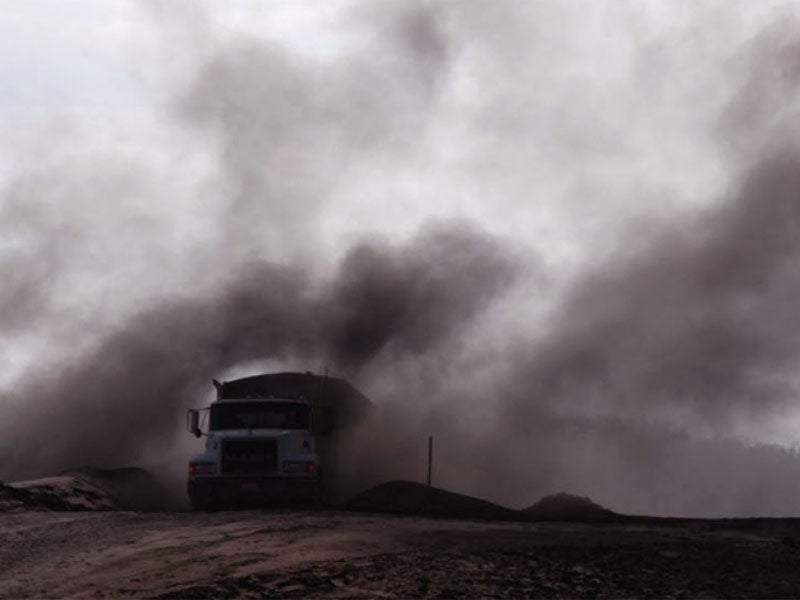The Racial Discrimination We too Often Overlook
Federal agencies like the EPA can help alleviate—or deepen—structural racism.

This page was published 7 years ago. Find the latest on Earthjustice’s work.
If you’re paying attention to the deep conversations around race happening in this country right now, then you’ve heard people talk about the devaluation and marginalization of black lives.
People of color are saying loudly and clearly that it’s time to rid this nation of the scourge of racial bias, both implicit and conscious, and to protect communities of color from its devastation.
Much of the discussion centers around the horrible confrontations we’ve seen unfold before our eyes when police shoot unarmed black folks who pose no threat. With so many of these shootings, it matters little whether the people who end up losing their lives are sitting, standing or lying down with hands raised in surrender. The victims of these police shootings are also victims of the way bias often operates in the minds of people who are given guns to protect us. When officers acting out of bias encounter black or brown skin, suspicion, fear and disregard for those black or brown lives takes over.
It makes complete sense that these brutal police killings, captured on video, send people into the streets time and time again demanding reform. I’ve been one of them.
But there are other ways black and brown lives are disregarded and devalued that largely escape notice.
It has been well documented that we face higher levels of pollution from power plants, refineries, landfills and waste treatment facilities. We breathe dirtier air, in large part because black and brown communities often end up as the dumping grounds for the polluting facilities that wealthier white communities don’t want. And given the higher rates of cancer and asthma in heavily polluted areas, we can assume that we’re more likely to die from this exposure.
In September, the United States Commission on Civil Rights slammed the EPA for failing to enforce civil rights laws intended to avoid discriminatory environmental impacts on communities of color.
The commission took a close look at the first-ever regulation for coal ash, the highly toxic remains of coal that’s burned in power plants to generate electricity. Given the EPA’s own analysis, the commission knew that low-income communities and communities of color are more likely to live near coal ash waste. The commission thought that the new coal ash regulation, called the coal combustion residuals rule, would be a sensible way to gauge the EPA’s response to a hugely significant form of industrial waste that adversely impacts communities of color.
Its conclusion: “The EPA tremendously dropped the ball on making the determination of whether there were environmental justice violations when issuing the coal ash rule,” said Commission Chair Martin Castro in a recent statement about the 230-page report. “We’re hurting the same people we’re supposed to be helping by the EPA coal ash rule.”
Coal ash has been linked to cancers, stroke and heart disease; kidney, liver and lung illnesses; brain damage; asthma; anemia; and developmental damage in fetuses. More than 120 million tons of this toxic waste are generated each year.
The commission concluded that the first-ever coal ash rule could, in some ways, have an even worse impact on communities of color because of the way it was crafted. In fact, this rule could become a textbook example of how structural racism occurs.
When the EPA designated coal ash as “nonhazardous solid waste” instead of “hazardous waste,” despite the presence of so many toxins, it left regulating coal ash up to the states, with no enforceable national standards.
And the EPA predicts that 30 of the 47 states that have coal ash will decide not to implement any new guidelines to protect the public, according to Lisa Evans, an Earthjustice attorney who specializes in hazardous waste law. She’s pointed out that these 30 states are more likely to have coal plants that disproportionally harm low-income and minority populations.
But it gets even worse. The coal ash rule is forcing some closures of coal ash ponds—large open pits filled with water and toxic sludge—if those ponds are unstable or contaminate groundwater. But power companies that own these coal ash ponds are beginning to move the toxic waste to municipal solid waste landfills that have no special protections for handling coal ash. Those landfills targeted to accept coal ash may be disproportionately located in communities of color and low-income communities, especially in the Southeast. One study from the University of North Carolina School of Public Health found that communities in North Carolina with more than 50 percent residents of color were 2.8 times more likely to have a landfill than those with less than 10 percent residents of color.
U.S. Rep. Hank Johnson, a Georgia Democrat, recognized the inequity and introduced a bill last March that would eliminate the loophole that lets power companies dump toxic coal ash in municipal solid waste landfills without adequate health and environmental protections.
Environmental injustice is as real as the police brutality we’ve all seen captured on video way too often in recent years. Environmental issues may not boil the blood in the same way, but coal ash and other toxic wastes cause cancer, asthma and brain damage. This stuff kills, silently.
Those who decide where to put toxic waste are less visible but no less responsible for making decisions that take lives. And our government’s response—despite the work of a small number of dedicated advocates—is definitely not forceful enough to bring about the change we need.
Based in Washington, D.C., Keith is the National Communications Strategist for Partnerships and Intersectional Justice.
